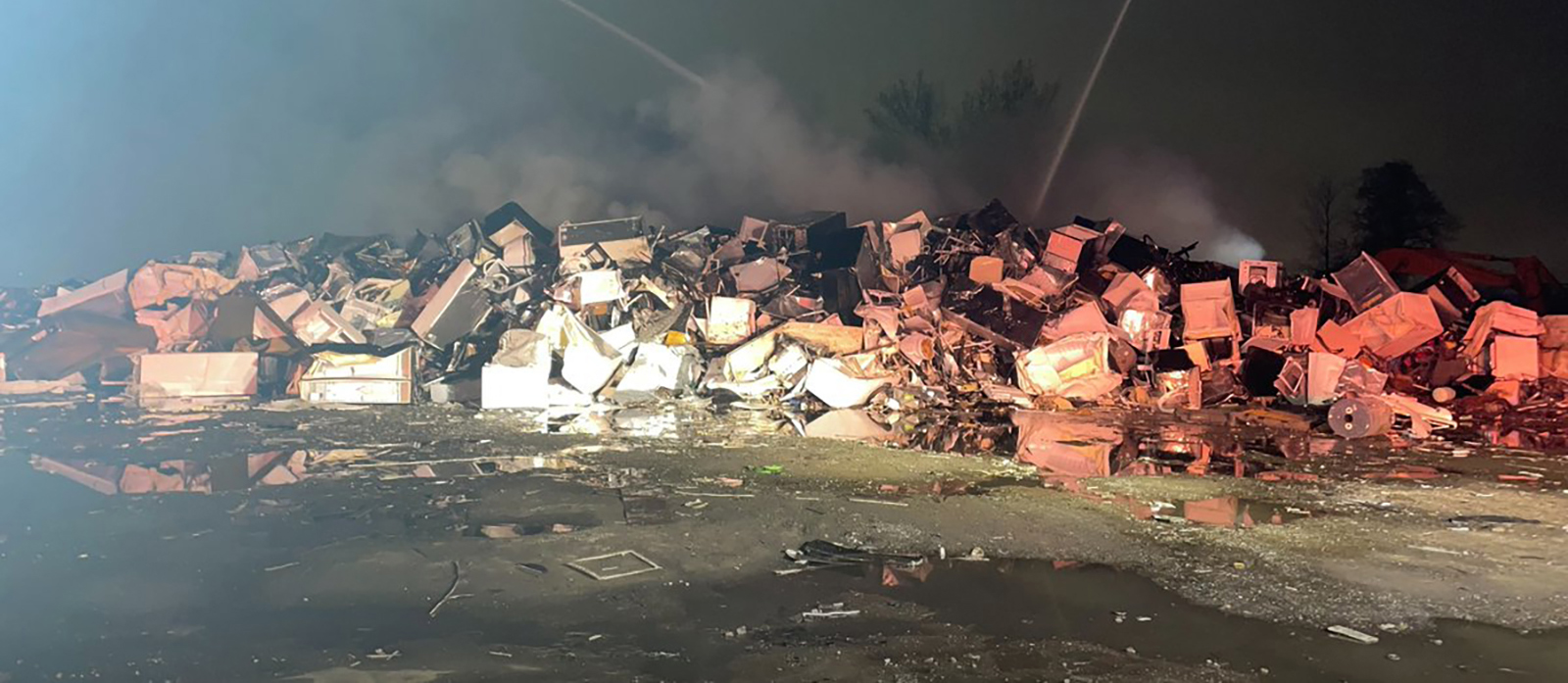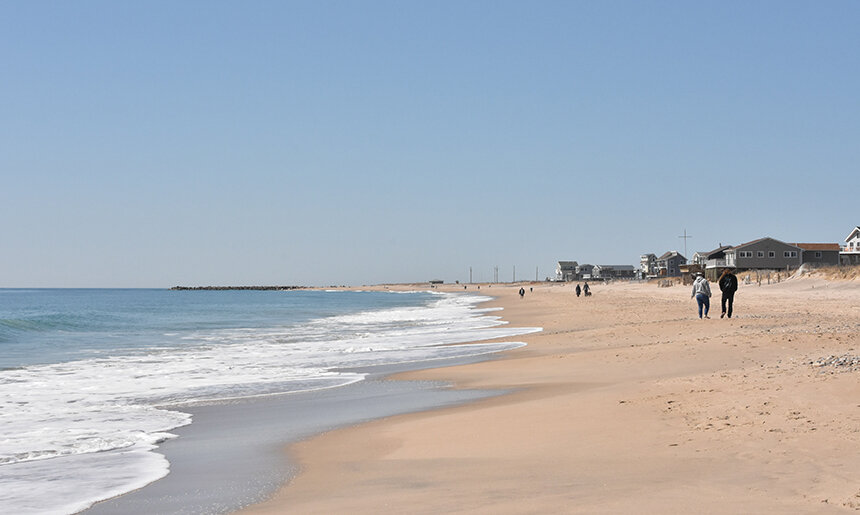PFAS Contamination from Aquidneck Island Navy Base Worries Neighbors
August 6, 2021
PORTSMOUTH, R.I. — Tom Grieb walks the trails around Lower Melville Pond on Aquidneck Island. This has been his only exercise since he decided a gym was counterproductive at his age. The area also served as his escape from home isolation during the early lockdown days of the pandemic.
“This is gorgeous,” he said, looking across the still body of water formed by a dam at a corner of the pond. In the opposite direction, Narragansett Bay is visible a few hundred yards below. “This is why I want to make sure it’s preserved properly.”
Grieb is worried about the quiet waters framing his walking route through the forest and open areas in Melville Park. As a member of the Naval Station Newport Restoration Advisory Board, he is acutely aware of toxins leaching into the area’s waterways, including eight small ponds, and a shelf in Narragansett Bay fronting his neighborhood. He said the pollution originates from the military base’s properties on the higher ground nearby that stored fuel, a refueling depot operated there from 1900 to the mid-1970s, and other materials.
The substances drawing the concern of Grieb and other area residents include the class of chemicals called per- and polyfluoroalkyl substances (PFAS), which are also known as “forever chemicals” because of their failure to break down in the environment over time. The substances are commonly found in flame-suppressing foam at airports and military installations where large amounts of fuel are commonly stored. These harmful chemicals have been detected in food, drinking water and animals, including fish. A bill to regulate PFAS levels in Rhode Island drinking water did not survive the 2021 General Assembly session.
The route Grieb takes from his backyard to Lower Melville Pond includes a walk along train tracks owned by the Rhode Island Department of Transportation (RIDOT) that are only used in a limited capacity, mostly in the summer and fall for a dinner train and pedal-powered rail bicycles — a quiet stretch with rising land covered in trees and vegetation on one side and a rocky slope down to the bay on the other.
The tracks intersect a working boatyard. There is also water; pond and rain overflow and accumulated groundwater running strong in some spots, and in other places lying in small pools dyed orange with rust and an oily substance producing a shiny film.
The retiree who spent years working in engineering management for Exxon said the sheen is the byproduct of waste from the Naval base, whose border is marked by a tall, chain-link fence along one of the paths near the pond, where he said the Rhode Island Department of Environmental Management (DEM) populates the water with fish for anglers.
“This area is loaded with PFAS,” Grieb said. “PFAS travels pretty far in groundwater. Further in surface runoff water. We do not use groundwater for drinking water on the island. We have reservoirs for that. But the groundwater is used for irrigation on crops. And in this area, because our water is so expensive, people drilled wells and they use it for their lawn sprinkler systems.”
The fuel tank sections of Naval Station Newport are where PFAS contamination is most likely to have occurred, according to Grieb.
“If you’re fighting a petroleum fire with metal tanks, you have to cool it down or you can’t put it out. The metal just reignites it. This pond was made for being able to spray the tanks,” he said, noting the containers remain underground on the property.
Grieb produced maps on which he traced the most likely path of drainage from the tanks downward past Upper Melville Pond, Lower Melville Pond and into a stream that flows through Melville Park, which the Navy donated to the community decades ago for recreational use, before emptying into Narragansett Bay.
“Almost the entire area from the tank farms drains into these ditches … out into the bay here,” he said, noting that in addition to PFAS contamination, the maps show areas where the Navy is rehabbing the property following suspected contamination from petroleum, heavy metals, including lead and arsenic, and polychlorinated biphenyls (PCBs) where there were electrical transformers. One of the maps indicated a shelf under the water along the shore where a cluster of oyster farms are located.
“I have talked to DEM and CRMC [Coastal Resources Management Council]. The only thing shellfish is tested for is E. coli. And they’re prodigious filter feeders and PFAS is something that biological … entities, if they ingest it through water, they retain it,” Grieb said.
Contending with soil and water pollution on Aquidneck Island, comprising the municipalities of Portsmouth, Middletown and Newport, presents a bureaucratic conundrum, according to Grieb.
The petroleum tanks housed at Naval Station Newport are overseen by the federal Defense Logistics Agency (DLA), which buys diesel fuel for the entire military to ensure standardized pricing rather than each branch cutting separate deals with fuel suppliers. But the firefighting systems protecting the fuel tanks were maintained by the Navy. Subsequently, while the same land is polluted with petroleum and PFAS, the Navy has responsibility for PFAS contamination and DLA contends with petroleum pollution, Grieb explained.
“The very same gram of dirt is polluted with both of them,” Grieb said. “Who’s responsible for what does get to be a problem.”
The Naval Station Newport Restoration Advisory Board established in 1996, on which Grieb has sat for eight years, serves as information exchange concerning the naval installation’s environmental restoration program. The board includes federal and state officials, members of environmental groups and residents of surrounding communities.
Grieb said the board’s most recent meeting, on July 21, was largely uneventful, with the group concluding it was in the “process” of receiving permission to test land in the area of the train tracks owned by RIDOT and other runoff areas under the town’s jurisdiction.
“However, that is the same thing they have been saying for two years,” Grieb wrote in an email the next day. “Permission from Portsmouth should be easy; RIDOT not so much.”
Naval Station Newport, formerly called the Newport Naval Education/Training Center, is a Superfund site, according to the Environmental Protection Agency (EPA). The base encompasses 1,063 acres on the west coast of Aquidneck Island in Portsmouth, Middletown and Newport. It also encompasses the northern third of Gould Island.
The EPA says the site includes multiple areas of contamination: a landfill that accepted domestic waste, acids, solvents, paint, waste oil and oil contaminated with PCBs from 1955 to the mid-1970s; a fire training area; a former shipyard; five fuel tank facilities in the Melville area, one of which is 300 feet from a coastal wetland and sludge from which was dumped on the ground or burned in chambers; and varying degrees of groundwater contamination.
The Navy is the lead agency for site investigation and cleanup, with formal oversight by EPA and DEM. Remediation began in the early 1990s and is ongoing.




Once more, vital environmental journalism that we don’t get anywhere else except ecori news.
Island residents of the three towns reading this ought to share this article, plus their two cents worth, strongly salted, with their State Reps and Senators—copied to the Governor. Why won’t RIDOT grant permission for testing the land—tomorrow??? Or Saturday, if it really takes that long?
And what’s up with DEM not setting heavy metal and PFSA limits in shellfish and testing for them? If it’s the starvation budgets they’ve been prescribed for the past two decades by the quacks at the GA, voters need to raise hell about that, too, and not re-elect them. And since we will be vetting a new DEM head soon to replace Janet Coit, these questions for the candidates should be among the highlighted.